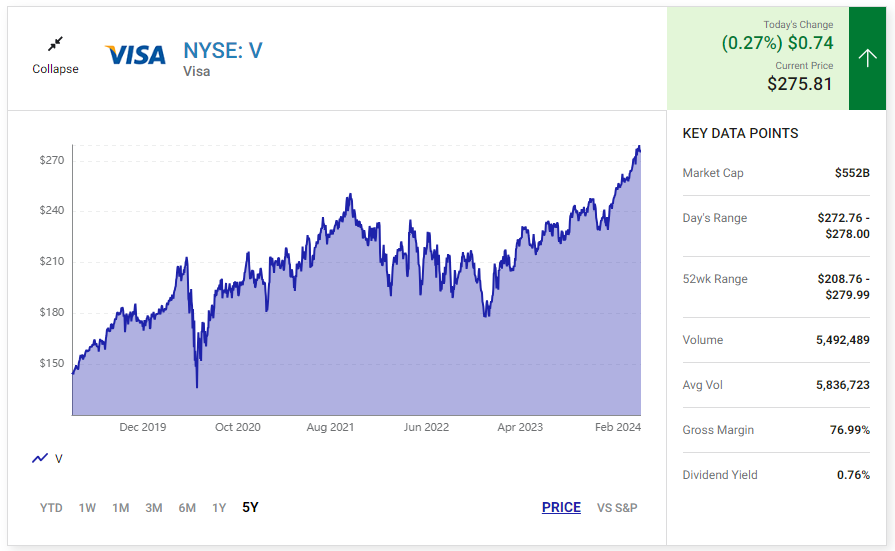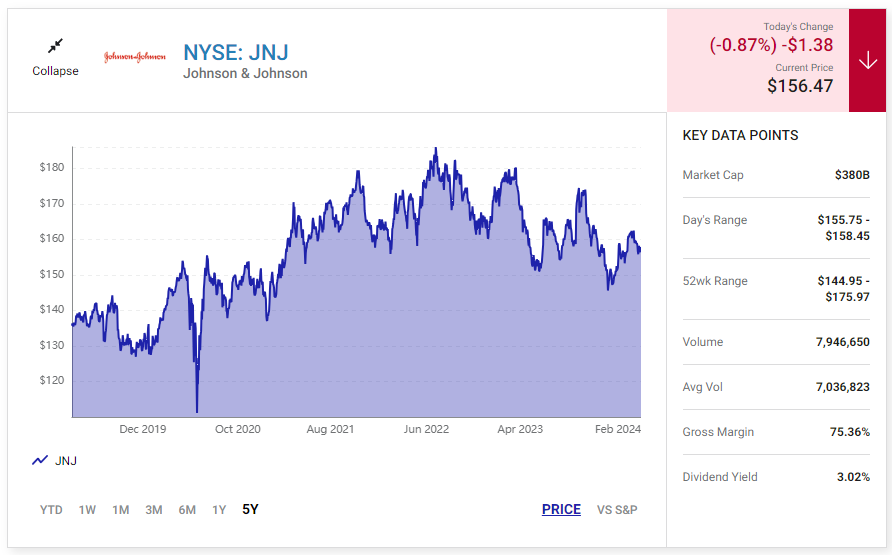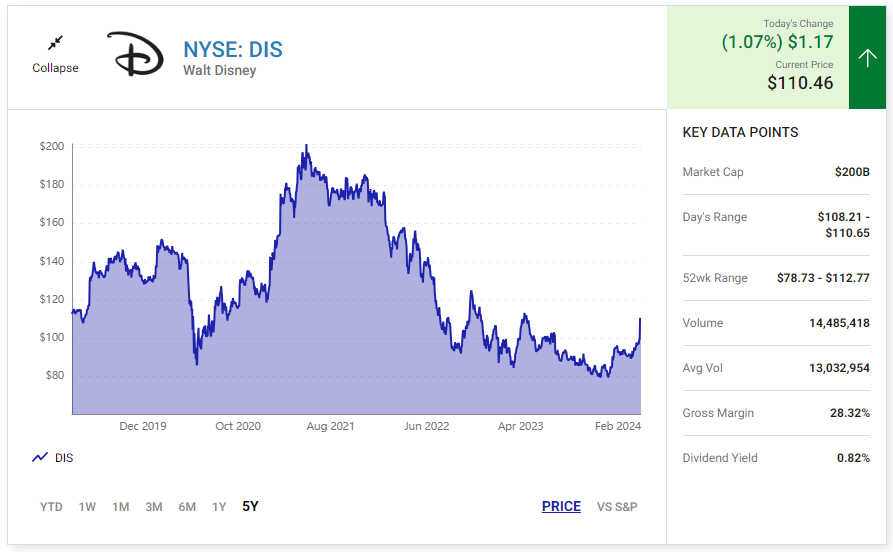For the better part of nearly 128 years, the majestic Dow Jones Industrial Average (^DJI) has served as Wall Street’s health barometer. What had been an index of 12 predominantly industrial businesses in the late 1800s has, over more than a century, transformed into a 30-component index that’s packed with diverse, industry-leading, multinational companies.
Even factoring in the Dow Jones’s inherent flaws — e.g., it’s a point-weighted index — this iconic index can still provide opportunistic long-term investors with a smart place to begin their research and locate amazing deals.
What follows are three Dow stocks you can confidently buy right now and hold forever.
Visa
The first Dow component that stands out as a no-brainer buy that long-term-minded investors can effectively set and forget is payment processor Visa (V).
If you’re looking for a potential concern with Visa, its biggest headwind tends to be the health of the U.S. and global economy. Recessions are a normal and inevitable part of the economic cycle. When they occur, it’s not uncommon for consumers and businesses to spend less, which will adversely impact the fees Visa collects from merchants.
 But just as recessions are inevitable, so are long-tailed periods of growth for the U.S. and global economy. While none of the dozen recessions in the U.S. since the end of World War II has surpassed 18 months, most expansions have lasted multiple years. Companies like Visa that count on domestic and economic growth are perfectly positioned to benefit from this long-term expansion.
But just as recessions are inevitable, so are long-tailed periods of growth for the U.S. and global economy. While none of the dozen recessions in the U.S. since the end of World War II has surpassed 18 months, most expansions have lasted multiple years. Companies like Visa that count on domestic and economic growth are perfectly positioned to benefit from this long-term expansion.
Another key to Visa’s success, which I’ve touched on previously, is that its management team has avoided getting into the lending arena. Even though some of its competitors double dip and generate revenue from both sides of the transaction aisle (including Dow component American Express), Visa has strictly focused on payment facilitation. Taking this approach ensures it isn’t exposed to loan losses during economic downturns. In short, it helps Visa’s profit margin stay above 50%.
Visa has an expansive growth runway as well. Whereas the best days are in the rearview mirror for most megacap companies, Visa has a multidecade growth opportunity lying ahead of it in underbanked emerging markets, such as the Middle East, Africa, and Southeastern Asia. It has more than enough capital to organically expand into these markets, or can opt to lean on acquisitions, as it did with Visa Europe in 2016, to reach markets with higher organic growth prospects.
There aren’t too many companies that offer sustained double-digit earnings growth potential, but payment processor Visa certainly fits the bill.
 Johnson & Johnson
Johnson & Johnson
A second Dow Jones Industrial Average stock that can be confidently purchased and held forever is healthcare conglomerate Johnson & Johnson (JNJ), which is better known as J&J.
Perhaps the biggest worry for current and prospective J&J shareholders is what’s going to happen with the roughly 100,000 outstanding lawsuits that allege the company’s now-discontinued talcum-based baby powder causes cancer. Johnson & Johnson has unsuccessfully attempted to settle this litigation in court on two separate occasions. Generally speaking, Wall Street and investors dislike uncertainty.
The good news is that Johnson & Johnson has a history of bringing predictability and certainty to the table. For instance, even though J&J’s prior two attempts to resolve these talc-based claims proved unsuccessful, it’s one of only two publicly traded companies to have been bestowed with the highest possible credit rating (AAA) from ratings agency Standard & Poor’s (S&P), which is a subsidiary of S&P Global. J&J’s incredible operating cash flow and cash-rich balance sheet ensure that it’ll be able to handle any future settlement.
This is also a good time to mention that healthcare stocks are highly defensive. Demand for prescription drugs, medical devices, and healthcare services doesn’t change just because the U.S. economy or Wall Street hits a rough patch. Since we can’t control when we become ill or what ailments we develop, J&J can count on predictable cash flow year in and year out.
More specific to Johnson & Johnson, it’s benefiting from a continued shift to pharmaceuticals. Novel drugs offer strong pricing power and juicy margins. By aggressively investing in research and collaborations, J&J has helped fuel adjusted operating earnings growth nearly every year over the past four decades.
Continuity is key, too. Investors only need two hands to count how many CEOs J&J has had since its founding in 1886. Having essential executives stick around has ensured that Johnson & Johnson’s growth initiatives are being properly implemented. Continuity at the top also explains why J&J has been able to raise its base annual dividend payout for 61 consecutive years.
Walt Disney
The third Dow stock you can confidently buy now and hold forever is none other than media giant Walt Disney (DIS).
Every publicly traded company contends with challenges, and Walt Disney is no exception. In addition to having most of its operating segments clobbered during the COVID-19 pandemic, Disney has been dealing with sizable losses from its streaming segment as it and other legacy media providers adjust to a cord-cutting environment. However, many of these challenges for the House of Mouse are receding in the rearview mirror.
A return to some semblance of normal following the pandemic is allowing Disney’s operating segments to thrive once more. Theme parks have reopened worldwide, and movie theater attendance has rebounded well off of its 2020 lows.
 What Walt Disney has working in its favor more than any other competitive advantage is its irreplaceability as an entertainment entity. There may be other theme parks to visit and movies/shows to watch, but no entertainment company has the depth of characters, storytelling capabilities, or ability to bridge cross-generational gaps quite like Walt Disney.
What Walt Disney has working in its favor more than any other competitive advantage is its irreplaceability as an entertainment entity. There may be other theme parks to visit and movies/shows to watch, but no entertainment company has the depth of characters, storytelling capabilities, or ability to bridge cross-generational gaps quite like Walt Disney.
To build on this point, Walt Disney’s uniqueness as a business affords it exceptional pricing power. The admission price for a ticket to Disneyland in Southern California has outpaced the prevailing inflation rate by a factor of 10 since the park opened in 1955.
Furthermore, it’s been able to raise monthly subscription prices for its various streaming tiers without losing too many subscribers. Since people are loyal to the Disney brand, it can use price increases as a means to reach profitability for its streaming segment by the fourth quarter of the current fiscal year.
Though Walt Disney is susceptible to short-lived cyclical swoons, its multitude of competitive advantages sets the company up for long-term success.
— Sean Williams
Where to Invest $99 [sponsor]Motley Fool Stock Advisor's average stock pick is up over 350%*, beating the market by an incredible 4-1 margin. Here’s what you get if you join up with us today: Two new stock recommendations each month. A short list of Best Buys Now. Stocks we feel present the most timely buying opportunity, so you know what to focus on today. There's so much more, including a membership-fee-back guarantee. New members can join today for only $99/year.
Source: The Motley Fool

